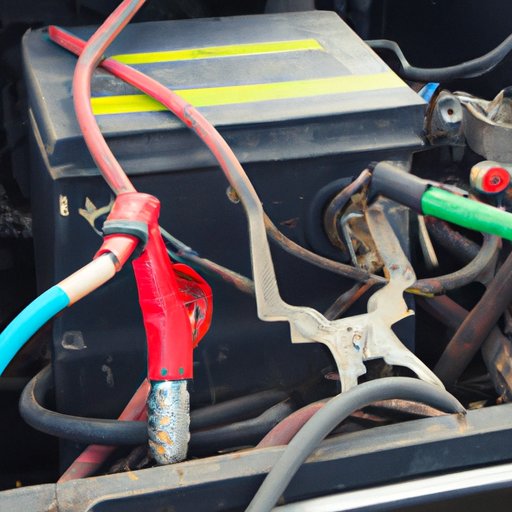Introduction
Jump-starting a semi truck requires more than just connecting two batteries together. It involves understanding how to check for damage, corrosion, and fuel leaks before attempting to start the engine. This article will provide a step-by-step guide on how to jump start a semi truck safely and efficiently.

Check the Battery and Cables
It is important to inspect the battery and cables for any signs of damage or corrosion before attempting to jump start a semi truck. If there is any visible damage to the battery or cables, then it is best to have them replaced before continuing.
Inspect the battery for any signs of physical damage such as cracks, bulges, or leaking fluid. If there is any visible damage, then it is best to replace the battery before attempting to jump start the semi truck.
Inspect the cables for any signs of corrosion or loose connections. If there is any corrosion, then use a wire brush or sandpaper to remove it. Once all the corrosion has been removed, tighten the connections to ensure a good connection.
Check for Fuel Leaks
Before attempting to jump start a semi truck, it is important to check for any fuel leaks. Visually inspect the fuel lines for any signs of wear or damage. Listen for any hissing noises that may indicate a leak in the fuel system.
If there are any signs of a fuel leak, then it is best to have a professional mechanic inspect and repair the problem before attempting to jump start the semi truck.

Ensure the Park Brake is Engaged
It is important to make sure the park brake is engaged before attempting to jump start a semi truck. Set the parking brake and test it to make sure it is securely engaged. This will help prevent the truck from rolling forward during the jump starting process.
Connect the Jump Start Cables
Once the battery and cables have been checked and the park brake is engaged, it is time to connect the jump start cables. Attach the red cable first, followed by the black cable. Connect the other end of the cables to the booster vehicle’s battery.
Start the Booster Vehicle
Start the booster vehicle and allow it to idle for several minutes. This will give the semi truck’s battery enough power to start the engine.
Start the Semi Truck
Turn the key and give the semi truck a few seconds to start. If the engine does not start after a few attempts, then it is best to have a professional mechanic inspect the problem.
Conclusion
Jump-starting a semi truck is a relatively simple process, but it is important to take the necessary safety precautions. Make sure to inspect the battery and cables for any signs of damage or corrosion, check for fuel leaks, ensure the park brake is engaged, and connect the jump start cables correctly before attempting to start the engine.
(Note: Is this article not meeting your expectations? Do you have knowledge or insights to share? Unlock new opportunities and expand your reach by joining our authors team. Click Registration to join us and share your expertise with our readers.)
